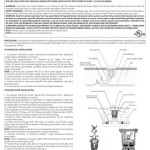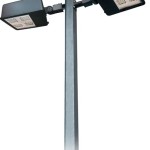What Color Outdoor Light Does Not Attract Bugs?
Summer evenings are often plagued by insects swarming around outdoor lights. This not only creates an annoyance but can also interfere with enjoying outdoor spaces. Understanding which light colors attract fewer insects can significantly reduce this problem. Choosing the right outdoor lighting can make a considerable difference in creating a more pleasant and bug-free environment.
Understanding Insect Attraction to Light
Insects navigate using natural light sources, primarily the moon and stars. Artificial lights disrupt this natural navigation, causing insects to become disoriented and drawn towards the light source. This phenomenon is known as phototaxis. The specific wavelengths emitted by different colored lights play a crucial role in their attractiveness to insects.
The Spectrum of Insect Attraction
Different insect species are attracted to various wavelengths of light. Ultraviolet (UV) light is particularly attractive to many flying insects, including moths, flies, and mosquitoes. Shorter wavelengths, such as blue and violet light, also tend to attract insects, although to a lesser extent than UV light. Longer wavelengths, such as yellow, orange, and red, are generally less attractive to most insects.
Warm-Colored Lights: The Best Choice for Bug Reduction
Warm-colored lights, specifically those emitting longer wavelengths in the yellow, orange, and red spectrum, are the least attractive to most nocturnal insects. These colors are further from the UV range and therefore less disruptive to their natural navigation. This makes them the ideal choice for outdoor lighting where minimizing insect attraction is a priority.
Sodium Vapor Lights: An Effective Insect-Repelling Option
Sodium vapor lights emit a yellowish-orange light that is notably less attractive to insects. These lights have been a popular choice for street lighting and other outdoor applications due to their energy efficiency and long lifespan. While they may not be the most aesthetically pleasing option for residential use, their effectiveness in reducing insect attraction is well-established.
LED Lights: Balancing Efficiency and Insect Control
LED lights have become increasingly popular due to their energy efficiency and versatility. However, not all LED lights are created equal when it comes to insect attraction. "Cool white" or "daylight" LED lights emit higher levels of blue light, making them more attractive to insects. Opting for "warm white" or specifically "yellow" LED lights significantly reduces insect attraction while still providing adequate illumination.
Bug Lights: A Specialized Solution
Specifically designed "bug lights" typically emit yellow light and are marketed as insect repellents. These lights are designed to minimize the wavelengths that attract insects while still providing some illumination. While the effectiveness of bug lights varies, they can be a helpful addition to an overall insect control strategy.
Additional Tips for Minimizing Insect Attraction
While choosing the right light color is crucial, other strategies can further reduce insect attraction to outdoor lighting:
Reducing Light Output
Lowering the wattage or using dimmer switches can reduce the intensity of the light and subsequently its attractiveness to insects.
Motion Sensors
Using motion sensors can limit the amount of time lights are on, reducing the overall exposure that attracts insects.
Placement of Lights
Strategically positioning lights away from areas where people congregate can minimize insect interactions.
Shielding Lights
Using shielded fixtures can direct light downwards, reducing its visibility to insects from afar.
Long-Term Benefits of Insect-Repelling Lighting
Choosing appropriate outdoor lighting can contribute to several long-term benefits:
Enhanced Enjoyment of Outdoor Spaces
Reducing insect presence allows for greater comfort and enjoyment of patios, decks, and gardens during evening hours.
Decreased Insect-Borne Disease Risk
Minimizing the number of insects around the home can contribute to a reduced risk of insect-borne diseases.
Environmental Benefits
Reducing light pollution and its impact on insect populations can contribute to a healthier ecosystem.

Outdoor Lighting Options That Won T Attract Bugs Vulcan Termite Pest Control

Do Led Lights Attract Bugs Outdoor Lighting

Outdoor Lights That Don T Attract Bugs Outdoorlights The

Do Led Lights Attract Bugs Outdoor Lighting

How To Find Outdoor Lights That Don T Attract Bugs Decorating Elves

Outdoor Lighting Options That Won T Attract Bugs Vulcan Termite Pest Control

Do Yellow Bug Light Bulbs Work 1000bulbs Blog
Are Bugs Attracted To Led Lights Quora

Do Led Lights Attract Bugs Super Bright Leds

Do Led Lights Attract Bugs Outdoor Lighting
Related Posts







